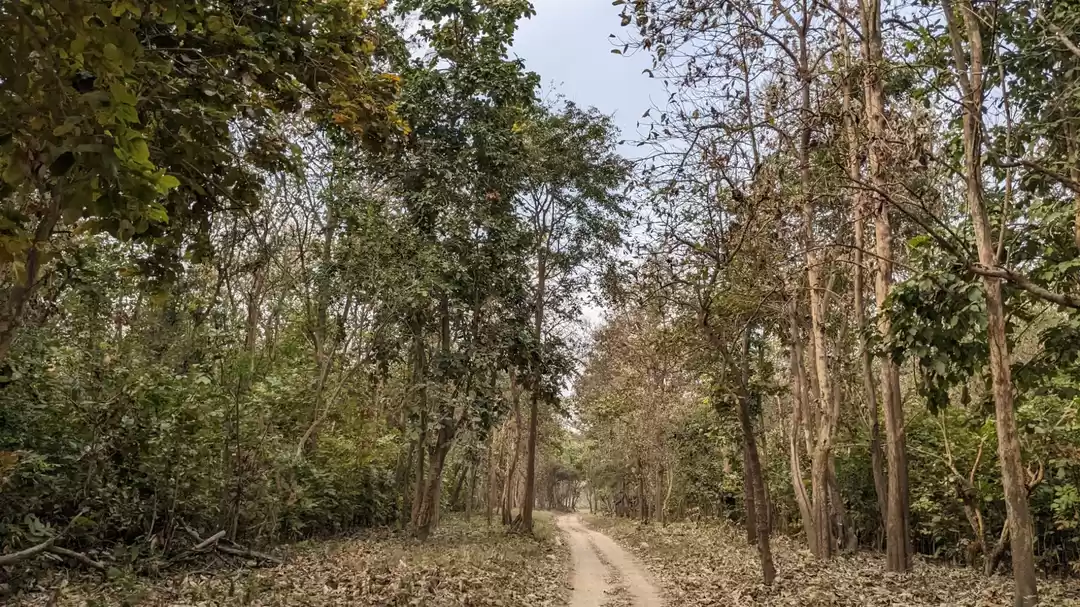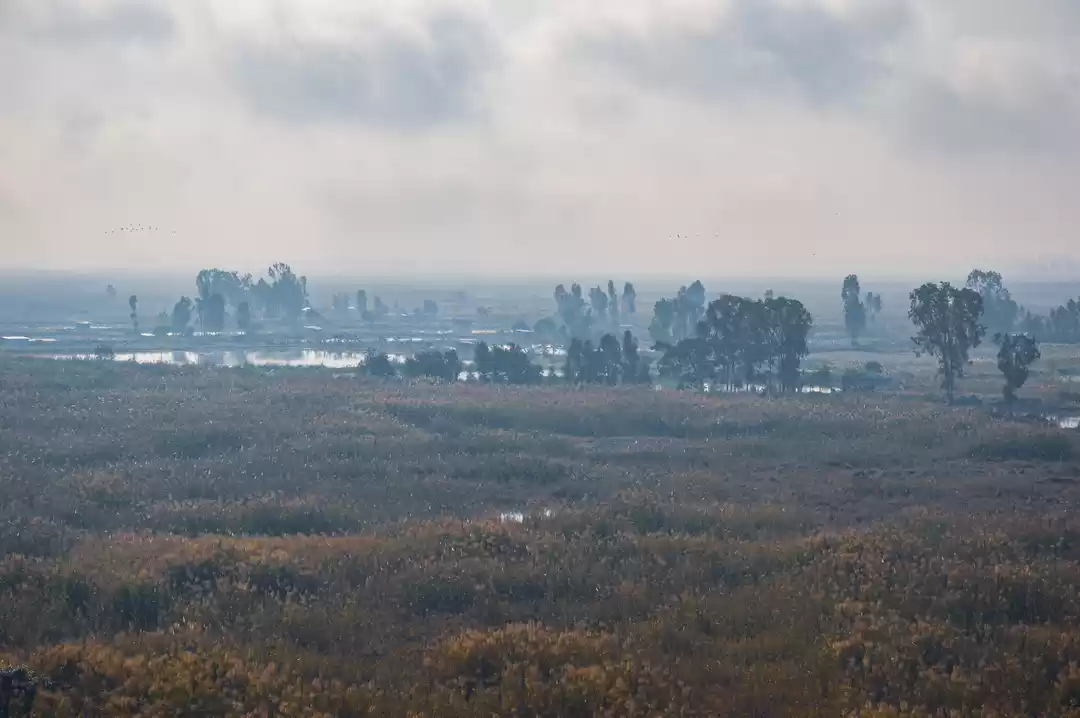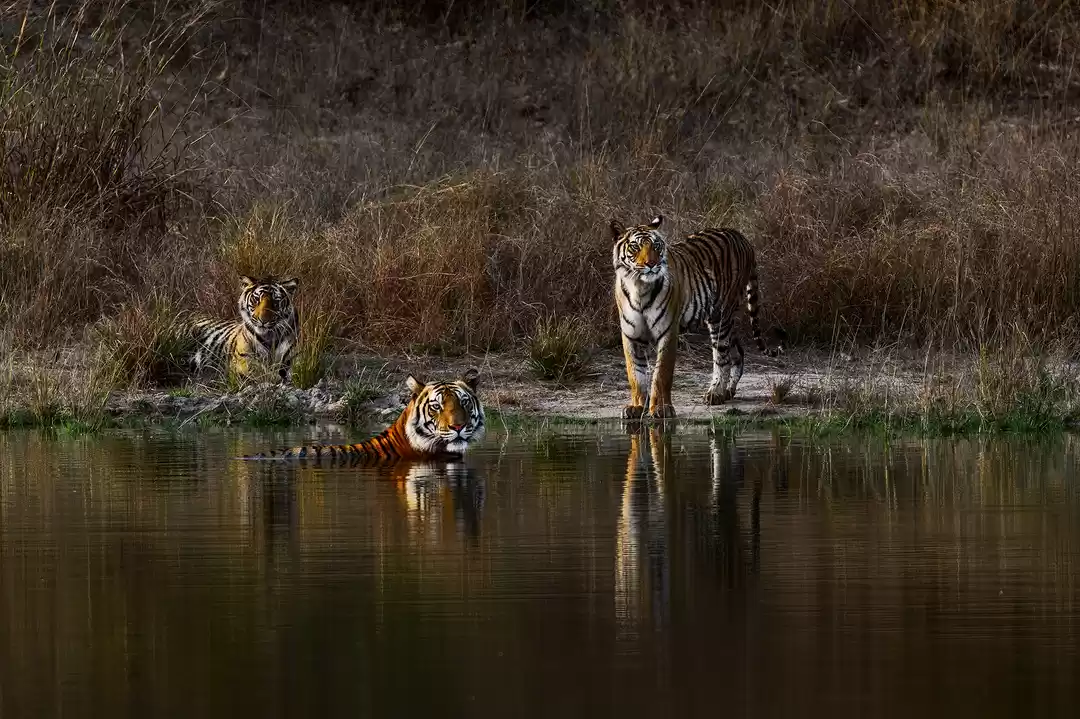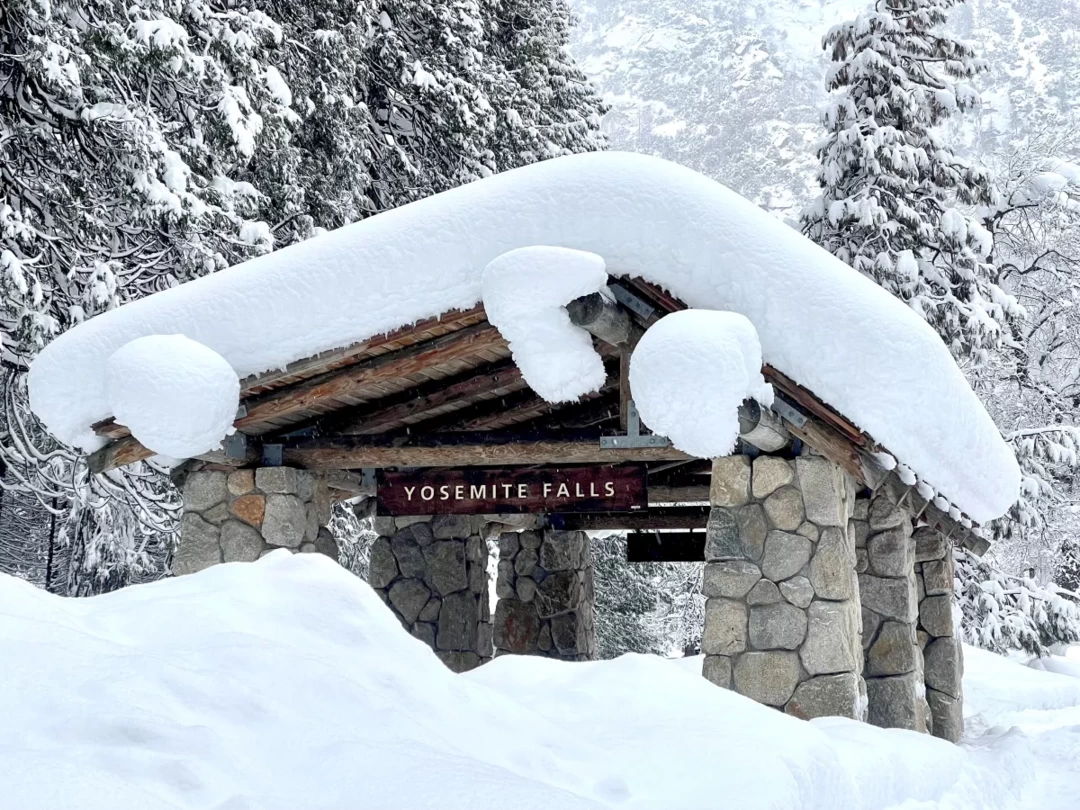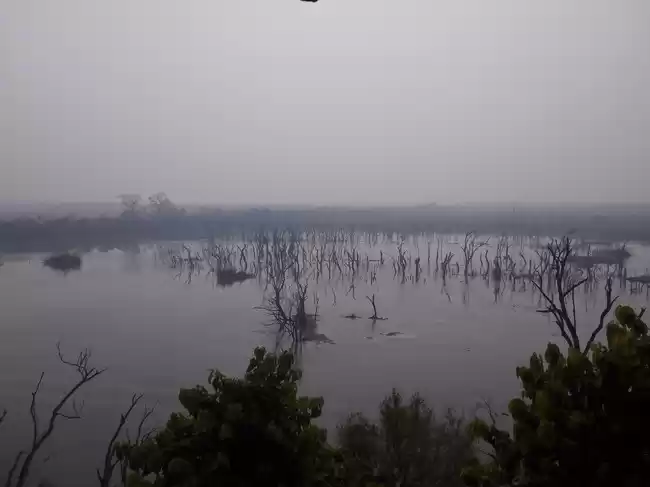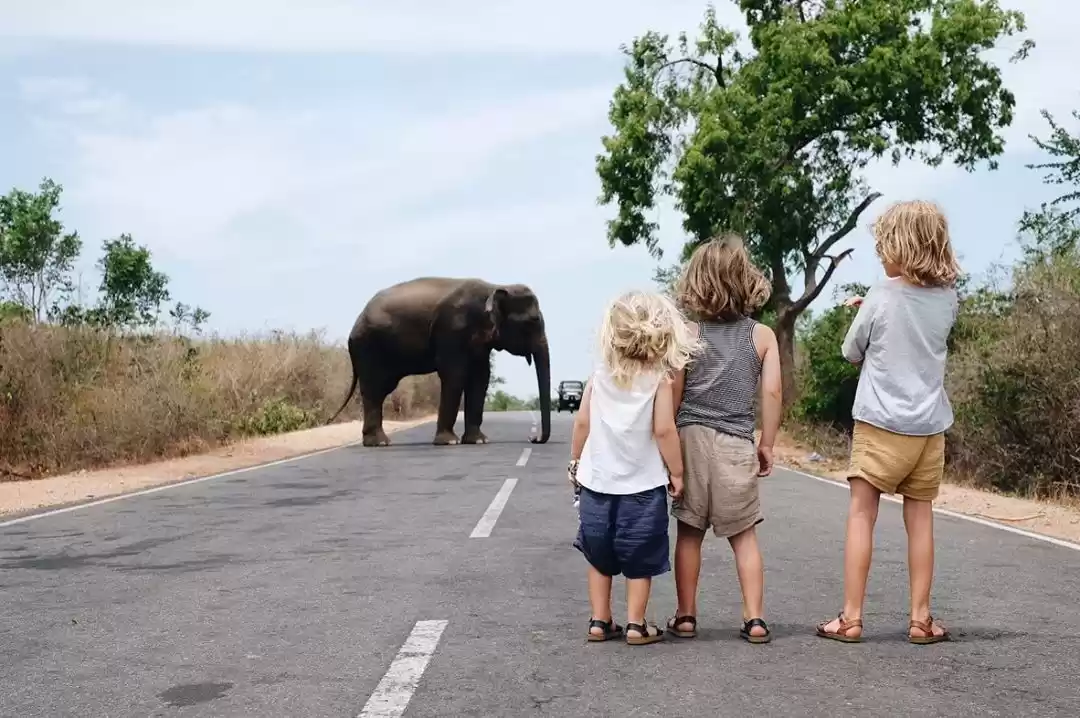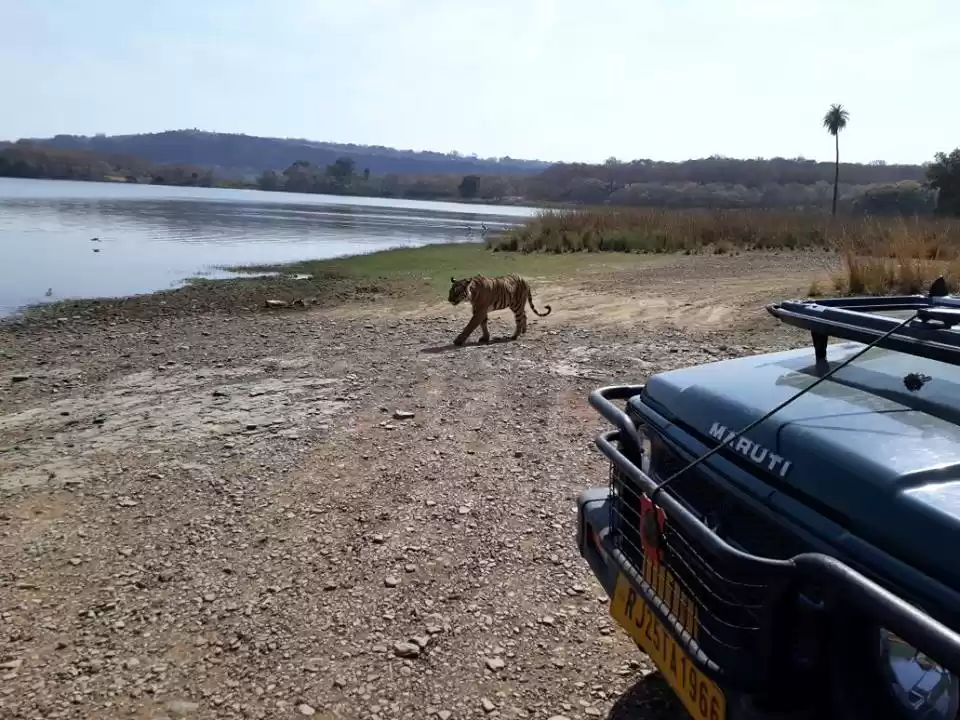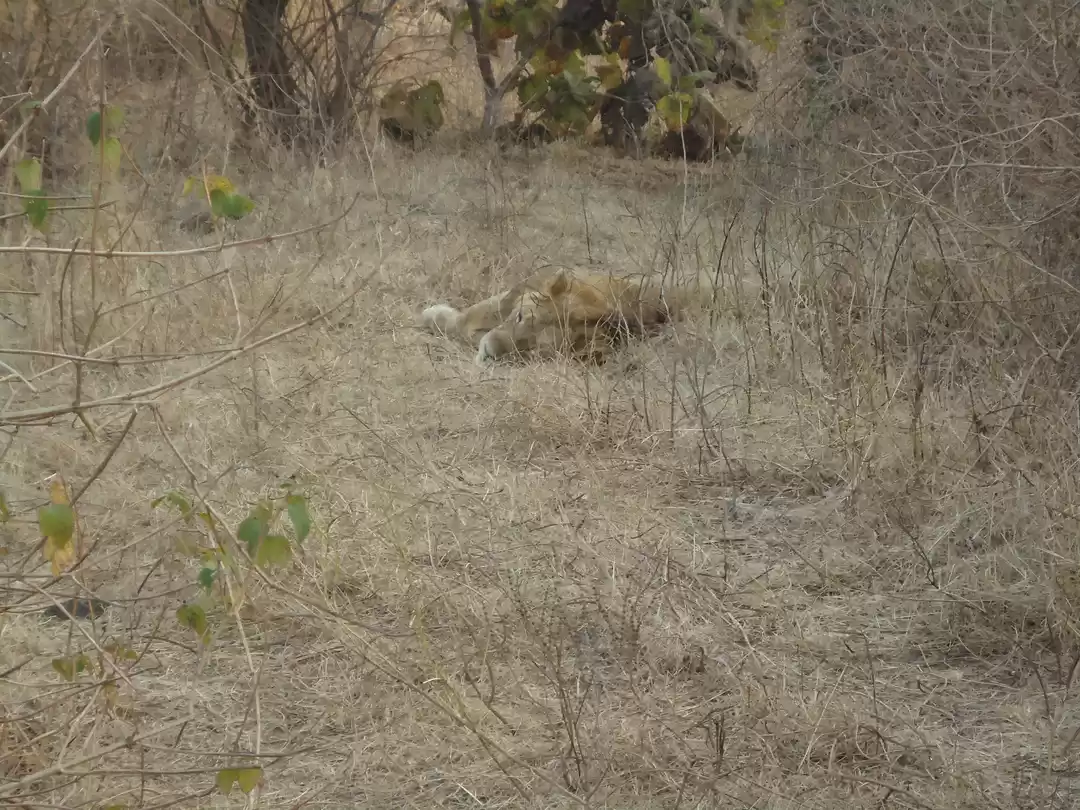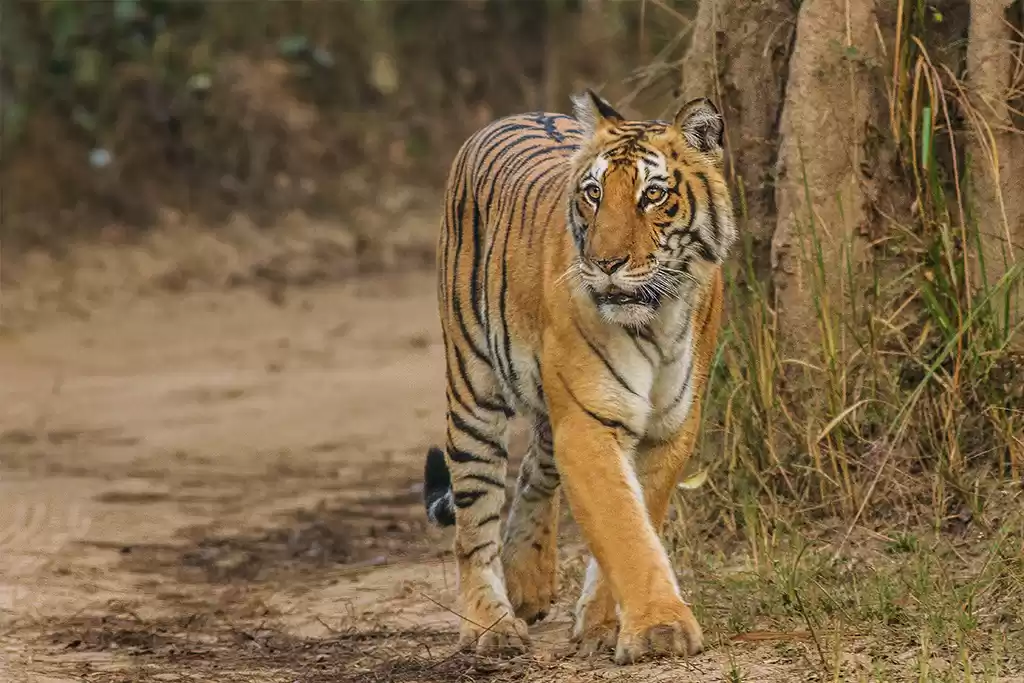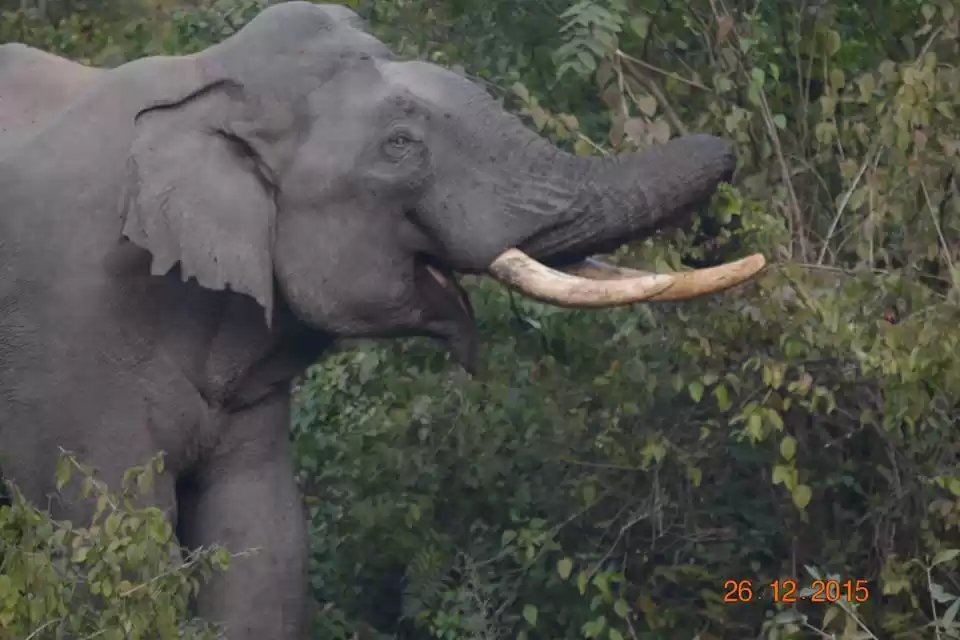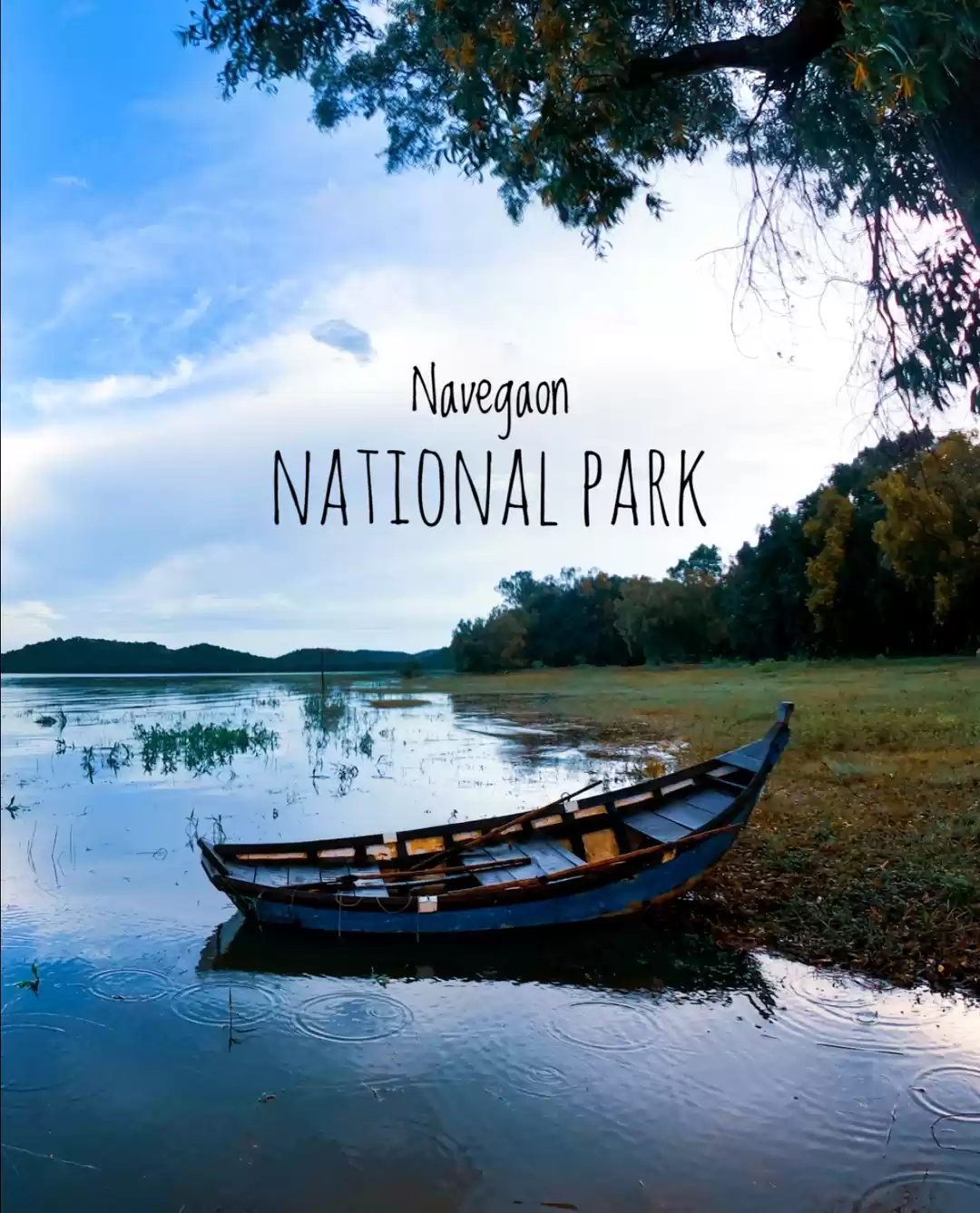Have you ever dreamed of visiting a place where the clouds and the mountains meet, where the rare and the beautiful birds sing, and where the sacred and the mysterious grove awaits? If yes, then you should definitely plan a trip to Phawngpui National Park, a spectacular conservatory forest in Mizoram, India.
Phawngpui National Park, also known as the Blue Mountain National Park, is located in the south-eastern corner of Mizoram, near the India-Myanmar border. It is the highest peak in the state, rising to an altitude of 2,157 meters above sea level. The national park covers an area of 50 square kilometers, and is home to a rich diversity of flora and fauna, including some rare and endemic species.
Phawngpui National Park is not only a natural wonder, but also a cultural and spiritual treasure. The local Mizo people consider the national park as a sacred place, and believe that it is inhabited by the spirits of their ancestors. The national park also has a fascinating history and folklore, with legends and stories that add to its charm and mystery.
In this article, we will guide you through everything you need to know about Phawngpui National Park, from its attractions and activities, to its climate and seasons, to its fees and permits, to its transportation and accommodation. Whether you are looking for a relaxing getaway, a thrilling adventure, or a spiritual journey, Phawngpui National Park has something for everyone.
Why Visit Phawngpui National Park?
Phawngpui National Park is a hidden gem that offers a unique and unforgettable experience to its visitors. Here are some of the reasons why you should visit this amazing place:

The Clouds and the Mountains
One of the most striking features of Phawngpui National Park is the stunning view of the clouds and the mountains. The national park is often enveloped by clouds, creating a magical and mystical atmosphere. The clouds also create a dramatic interplay of light and shadow, as they change their shapes and colors with the sun and the wind. Some of the best spots to witness this phenomenon are:
Thlazuang Kham: This is a spectacular cliff that overlooks the Chhimtuipui River and the mountain ranges of Myanmar. It is also known as the “Cliff of No Return”, as it is believed that anyone who jumps from here will never come back. The cliff offers a panoramic view of the valley and the clouds, and is a popular spot for photography and camping.
Phawngpui Peak: This is the highest point in the state, and the most challenging and rewarding trek in the national park. The peak is surrounded by sheer cliffs and deep gorges, and is often covered by clouds. The peak offers a breathtaking view of the mountains and the forests, and is a perfect place for meditation and solitude.
Phawngpui Tlang: This is a sacred grove of rhododendrons, which bloom in various colors in the spring. The grove is also known as the “Garden of the Gods”, as it is believed that the spirits of the Mizo chiefs reside here. The grove offers a serene and beautiful view of the flowers and the clouds, and is a place of worship and reverence.
The Rare Birds and the Wildlife
Another reason to visit Phawngpui National Park is the rich diversity of flora and fauna that it hosts. The national park is a haven for birdwatchers and wildlife enthusiasts, as it has more than 300 species of birds and 20 species of mammals, many of which are rare and endemic. Some of the rare and endemic species that can be found in the national park are:
Mount Victoria babax: This is a rare bird that was rediscovered in 2017 after 64 years. It is a medium-sized babbler, with a brownish-grey plumage and a black cap. It is endemic to the mountains of Mizoram and Myanmar, and is considered as a vulnerable species. It is also known as the “Phawngpui babax”, as it was first spotted in the national park.
Blyth’s tragopan: This is a rare and endangered pheasant, with a bright red plumage and a blue-black crest. It is endemic to the eastern Himalayas, and is considered as the state bird of Mizoram. It is also known as the “horned pheasant”, as it has two fleshy horns on its head. It is a shy and elusive bird, and can be seen in the dense forests of the national park.
Hume’s pheasant: This is another rare and endangered pheasant, with a dark brown plumage and a white crest. It is endemic to the eastern Himalayas, and is considered as a near-threatened species. It is also known as the “bar-tailed pheasant”, as it has a long tail with black and white bars. It is a secretive and solitary bird, and can be found in the high-altitude forests of the national park.
Dark-rumped swift: This is a rare and vulnerable bird, with a blackish-brown plumage and a white rump. It is endemic to the eastern Himalayas, and is considered as a migratory species. It is also known as the “Phawngpui swift”, as it was first recorded in the national park. It is a fast and agile bird, and can be seen in the cliffs and the caves of the national park.
Slow loris: This is a rare and endangered mammal, with a grey-brown fur and large eyes. It is endemic to the eastern Himalayas, and is considered as the only venomous primate in the world. It is also known as the “Phawngpui loris”, as it was first discovered in the national park. It is a nocturnal and arboreal animal, and can be spotted in the trees and the bamboo thickets of the national park.
Stump-tailed macaque: This is a rare and vulnerable mammal, with a dark brown fur and a short tail. It is endemic to the eastern Himalayas, and is considered as one of the most primitive monkeys in the world. It is also known as the “Phawngpui macaque”, as it was first observed in the national park. It is a diurnal and terrestrial animal, and can be seen in the forests and the grasslands of the national park.
Tiger: This is a rare and endangered mammal, with a yellow-orange fur and black stripes. It is the largest and the most powerful cat in the world, and is considered as the national animal of India. It is also known as the “Phawngpui tiger”, as it was once found in the national park. It is a nocturnal and solitary animal, and can be found in the dense and remote areas of the national park.
Goral: This is a rare and vulnerable mammal, with a grey-brown fur and curved horns. It is a type of goat-antelope, and is considered as a close relative of the Himalayan tahr. It is also known as the “Phawngpui goral”, as it was first recorded in the national park. It is a diurnal and herbivorous animal, and can be seen in the rocky and grassy slopes of the national park.
Asiatic black bear: This is a rare and endangered mammal, with a black fur and a white chest. It is a type of bear, and is considered as one of the most intelligent animals in the world. It is also known as the “Phawngpui bear”, as it was once sighted in the national park. It is a nocturnal and omnivorous animal, and can be found in the forests and the caves of the national park.
Capped langur: This is a rare and endangered mammal, with a black fur and a white cap. It is a type of monkey, and is considered as one of the most social animals in the world. It is also known as the “Phawngpui langur”, as it was first reported in the national park. It is a diurnal and arboreal animal, and can be seen in the trees and the bamboo groves of the national park.
Leopard: This is a rare and endangered mammal, with a yellow-brown fur and black spots. It is a type of cat, and is considered as one of the most adaptable animals in the world. It is also known as the “Phawngpui leopard”, as it was once spotted in the national park. It is a nocturnal and solitary animal, and can be found in the forests and the grasslands of the national park.
The Sacred Grove and the Culture
The third reason to visit Phawngpui National Park is the sacred grove and the culture that it represents. The national park is a sacred place for the local Mizo people, who have a deep connection and respect for the nature and the spirits. The national park also has a fascinating history and folklore, with legends and stories that add to its charm and mystery. Some of the legends and stories associated with the national park are:
The legend of the Phawngpui princess: This is a legend that tells the story of a beautiful princess who lived in the Phawngpui Peak, and was admired by many suitors. However, she rejected them all, as she was in love with the spirit of the mountain. One day, a brave warrior from a neighboring tribe managed to climb the peak and woo the princess. He took her away from the peak, but soon realized that she was unhappy and sick. He decided to return her to the peak, but it was too late. The princess died on the way, and the warrior buried her on the cliff of Thlazuang Kham. The spirit of the mountain was enraged, and caused a landslide that killed the warrior and his men. The legend says that the princess and the warrior still haunt the peak and the cliff, and that their love is reflected in the clouds and the flowers.
The legend of the blue orchid: This is a legend that tells the story of a rare and beautiful orchid that grows in the Phawngpui Tlang. The orchid is blue in color, and has a sweet fragrance. It is also known as the “Phawngpui orchid”, as it is endemic to the national park. The legend says that the orchid was created by the spirit of the mountain, who wanted to make a gift for his beloved princess. He gathered the essence of the sky, the water, and the wind, and shaped them into a flower. He placed the flower in the sacred grove, and waited for the princess to come and see it. However, the princess never came, as she was taken away by the warrior. The spirit of the mountain was heartbroken, and cursed the flower to be rare and elusive. The legend says that the orchid only blooms once in a year, and that only those who are pure and faithful can see it.
The legend of the Mount Victoria babax: This is a legend that tells the story of a rare and elusive bird that lives in the Phawngpui National Park. The bird is brownish-grey in color, and has a black cap. It is also known as the “Phawngpui babax”, as it was first spotted in the national park. The legend says that the bird was once a human, who was a friend of the princess. He was a loyal and brave companion, who helped her escape from the warrior. However, he was wounded by an arrow, and fell from the peak. The spirit of the mountain took pity on him, and turned him into a bird. He gave him the ability to fly and sing, and told him to stay in the national park. The legend says that the bird still sings the songs of the princess, and that he is the guardian of the national park.
How to Plan Your Visit to Phawngpui National Park?
Phawngpui National Park is a place that requires some planning and preparation before you visit. Here are some of the things you need to consider and arrange for your trip:

The Best Time to Visit
The climate and the seasons of Phawngpui National Park vary throughout the year, and affect the experience and the accessibility of the national park. Here are the advantages and disadvantages of each season:
Summer (April to June): This is the best time to visit the national park, as the weather is pleasant and mild, with temperatures ranging from 11°C to 29°C. The sky is clear and blue, and the clouds are low and fluffy. The flowers are in full bloom, and the birds are in full song. The national park is open and accessible, and the trekking and camping are enjoyable. However, this is also the peak season, and the national park can be crowded and expensive. You need to book your tickets and accommodation in advance, and be prepared for some traffic and noise.
Monsoon (July to September): This is the worst time to visit the national park, as the weather is wet and humid, with temperatures ranging from 15°C to 25°C. The sky is cloudy and grey, and the clouds are high and dense. The rain is heavy and frequent, and the mist is thick and foggy. The flowers are wilted, and the birds are silent. The national park is closed and inaccessible, and the trekking and camping are dangerous. You need to avoid this season, as there is a risk of landslides, floods, leeches, and diseases.
Winter (October to March): This is a good time to visit the national park, as the weather is cool and dry, with temperatures ranging from 5°C to 20°C. The sky is bright and sunny, and the clouds are thin and wispy. The flowers are fading, and the birds are migrating. The national park is open and accessible, and the trekking and camping are comfortable. However, this is also the cold season, and the national park can be chilly and windy. You need to bring warm clothes and blankets, and be prepared for some frost and snow.
The Entry Fee and the Permits
The entry fee and the permits of Phawngpui National Park are different for different activities and services, and are required for visiting and exploring the national park. Here are the details and conditions of the fees and permits:
Entry fee: This is the basic fee that you need to pay to enter the national park. The fee is Rs. 20 per person for Indians, and Rs. 250 per person for foreigners. The fee is valid for one day, and is non-refundable and non-transferable. You need to pay the fee at the entrance gate of the national park, and show your identity proof and medical certificate.
Camping fee: This is the additional fee that you need to pay to camp in the national park. The fee is Rs. 50 per person per night for Indians, and Rs. 500 per person per night for foreigners. The fee is valid for one night, and is non-refundable and non-transferable. You need to pay the fee at the entrance gate of the national park, and show your identity proof and medical certificate. You also need to bring your own tent and equipment, and follow the camping rules and regulations.
Guide fee: This is the optional fee that you need to pay to hire a guide in the national park. The fee is Rs. 500 per day for Indians, and Rs. 1000 per day for foreigners. The fee is valid for one day, and is non-refundable and non-transferable. You need to pay the fee at the entrance gate of the national park, and show your identity proof and medical certificate. You also need to book your guide in advance, and follow the guide’s instructions and suggestions.
Vehicle fee: This is the optional fee that you need to pay to use a vehicle in the national park. The fee is Rs. 100 per day for Indians, and Rs. 200 per day for foreigners. The fee is valid for one day, and is non-refundable and non-transferable. You need to pay the fee at the entrance gate of the national park, and show your identity proof and medical certificate. You also need to bring your own vehicle and driver, and follow the vehicle rules and regulations.
The Transportation and the Accommodation
The transportation and the accommodation of Phawngpui National Park are the most important and the most challenging aspects of planning your trip. Here are some of the options and the tips for reaching and staying near the national park:
By air: The nearest airport to the national park is Aizawl Airport, which is about 300 kilometers away. The airport is connected to major cities in India, such as Kolkata, Guwahati, Delhi, and Mumbai. You can take a flight to Aizawl, and then take a taxi or a bus to the national park. The journey takes about 8 to 10 hours, and costs about Rs. 3000 to Rs. 5000 per person. You can also take a helicopter from Aizawl to Sangau, which is about 20 kilometers away from the national park. The helicopter service is operated by Pawan Hans, and is available on Mondays, Wednesdays, and Fridays. The journey takes about 45 minutes, and costs about Rs. 1500 per person.
By rail: The nearest railway station to the national park is Silchar Railway Station, which is about 250 kilometers away. The railway station is connected to major cities in India, such as Kolkata, Guwahati, Delhi, and Mumbai. You can take a train to Silchar, and then take a taxi or a bus to the national park. The journey takes about 7 to 9 hours, and costs about Rs. 2000 to Rs. 4000 per person.
By road: The national park is well-connected by road to Aizawl, Silchar, and other nearby towns and villages. You can take a taxi or a bus to the national park, or drive your own vehicle. The road condition is good, but the terrain is hilly and curvy. The journey takes about 6 to 8 hours, and costs about Rs. 1000 to Rs. 3000 per person.
By trek: The national park can also be reached by trekking from Sangau, which is the nearest village to the national park. The trek is about 20 kilometers long, and takes about 4 to 6 hours. The trek is moderate to difficult, and requires a guide and a permit. The trek offers a scenic and adventurous experience, as you pass through forests, streams, waterfalls, and cliffs. The trek costs about Rs. 500 to Rs. 1000 per person.
Best Places To Stay Nearby
Some of the nearest and the best places to stay near the national park are:
Hotel Regency:
This is a 3-star hotel in Aizawl, which offers comfortable and affordable rooms, with facilities such as Wi-Fi, TV, AC, and room service. The hotel also has a restaurant, a bar, a gym, and a conference hall. The hotel is about 300 kilometers away from the national park, and costs about Rs. 2000 to Rs. 3000 per night.
Hotel Orchid:
This is a 2-star hotel in Silchar, which offers cozy and budget-friendly rooms, with facilities such as Wi-Fi, TV, AC, and room service. The hotel also has a restaurant, a lounge, and a travel desk. The hotel is about 250 kilometers away from the national park, and costs about Rs. 1000 to Rs. 2000 per night.
Sangau Guest House:
This is a guest house in Sangau, which offers basic and cheap rooms, with facilities such as Wi-Fi, TV, fan, and room service. The guest house also has a kitchen, a dining area, and a garden. The guest house is about 20 kilometers away from the national park, and costs about Rs. 500 to Rs. 1000 per night.
Phawngpui Campsite:
This is a campsite in the national park, which offers tents and sleeping bags, with facilities such as water, firewood, and toilets. The campsite also has a guide, a cook, and a guard. The campsite is located near the Thlazuang Kham cliff, and offers a stunning view of the valley and the clouds. The campsite is about 10 kilometers away from the national park entrance, and costs about Rs. 1000 to Rs. 2000 per night.
Phawngpui National Park is a place that will leave you spellbound and speechless, with its beauty, diversity, and mystery. It is a place that will make you feel closer to nature, to yourself, and to the divine. It is a place that you should not miss, if you are looking for a memorable and meaningful trip.
Tips and suggestions for Travellers
Here are some tips and suggestions for you to make the most of your visit to Phawngpui National Park:
1. Do some research and planning before you visit the national park, and book your tickets and accommodation in advance.
2. Choose the best time and season to visit the national park, depending on your preferences and goals.
3. Pay the fees and obtain the permits for the activities and services that you want to avail in the national park.
4. Hire a guide and a vehicle, if you need help and convenience in reaching and exploring the national park.
5. Bring warm clothes and blankets, as the national park can be chilly and windy, especially in the winter.
6. Bring your own tent and equipment, if you want to camp in the national park, and follow the camping rules and regulations.
7. Bring your own food and water, as the national park does not have any shops or restaurants, and follow the food and water safety precautions.
8. Bring your own binoculars and camera, if you want to see and capture the birds and the wildlife, and follow the birding and wildlife viewing etiquette.
9. Respect the nature and the culture of the national park, and do not litter, damage, or disturb anything.
10. Enjoy the clouds and the mountains, the rare birds and the wildlife, and the sacred grove and the culture of the national park, and have a wonderful time.
We hope that this article has helped you to learn more about Phawngpui National Park, and to plan your visit to this amazing place. If you have any questions or feedback, please feel free to contact us.
If you have visited Phawngpui National Park, please share your experience and photos with us. We would love to hear from you. Thank you for reading, and happy traveling!







